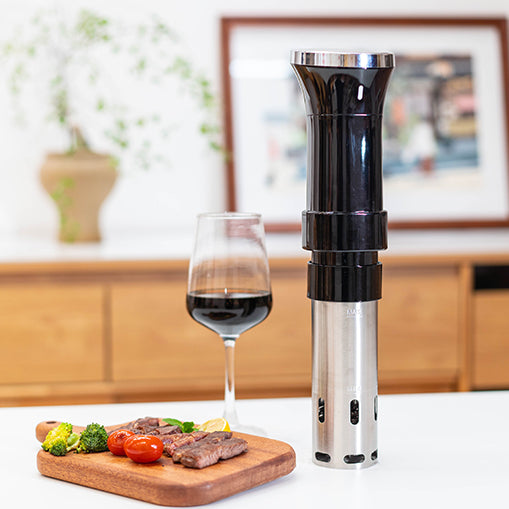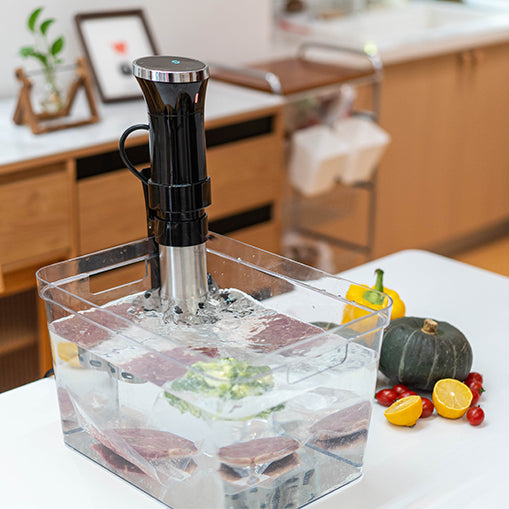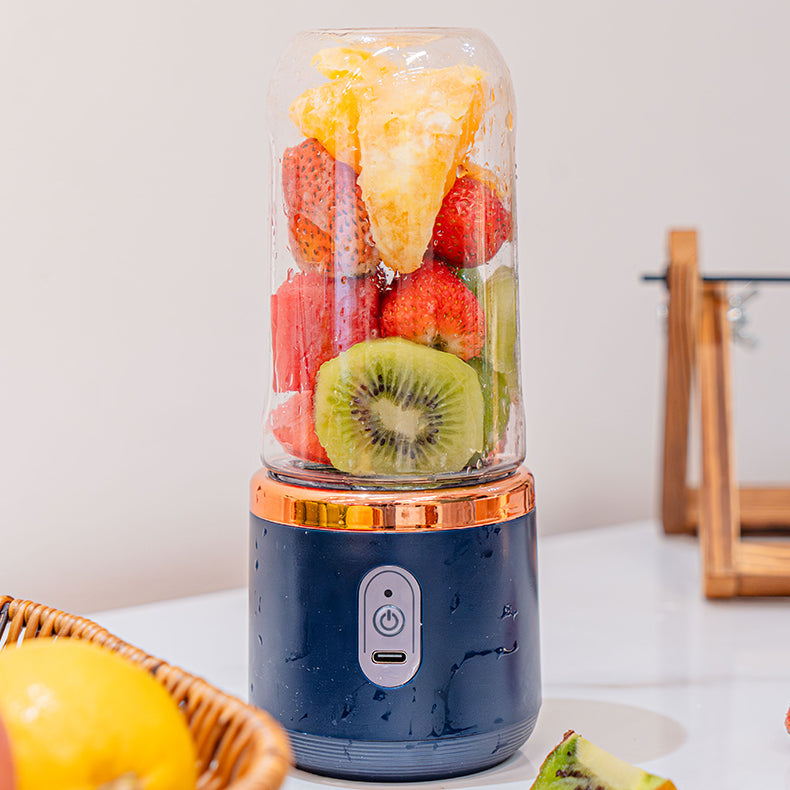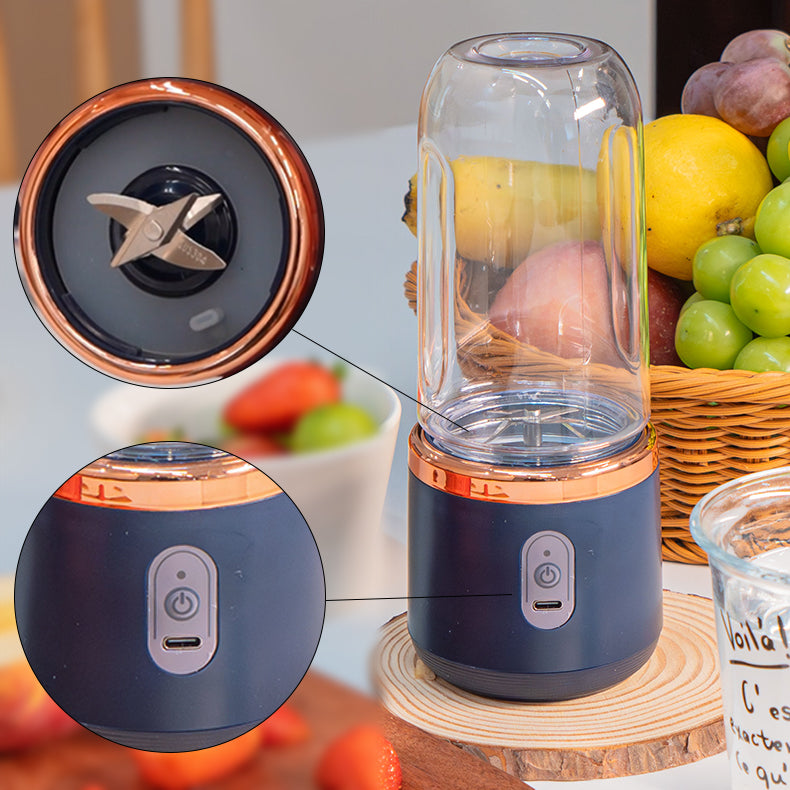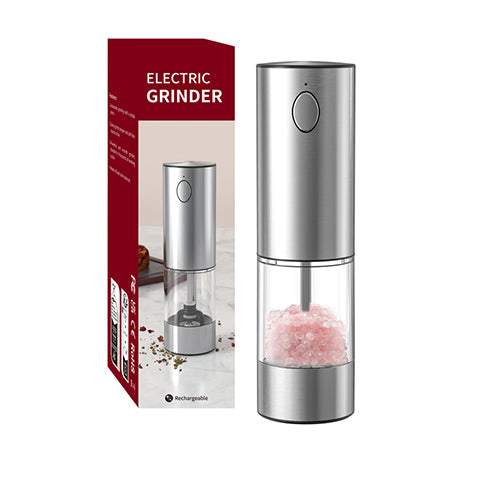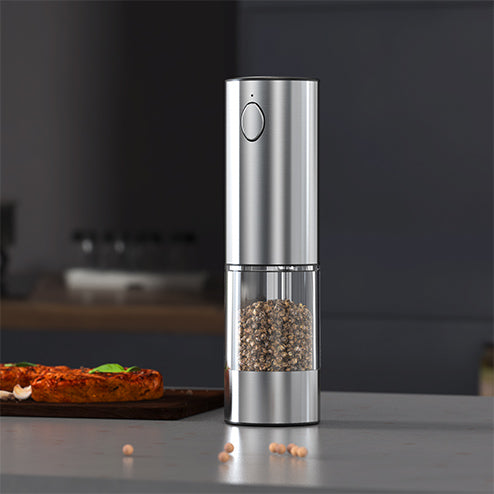Sous vide ribs offer a unique way to achieve tender, melt-in-your-mouth perfection, and the method is quickly gaining popularity among home cooks and BBQ lovers. By cooking sous vide baby back ribs in a controlled water bath for an extended period, you can ensure even cooking and enhanced flavor.
In this guide, we'll explore all the details about making sous vide ribs recipes from what you need to get started to the step-by-step process to achieve restaurant-quality results at home. Whether you love beef or pork ribs, the sous vide technique guarantees that each bite is juicy and flavorful.

Why Use Sous Vide for Ribs?
Many people may wonder "Can you sous vide ribs?". Absolutely. In fact, sous vide cooking has several distinct advantages, especially when applied to sous vide barbecue pork ribs, a meat that can sometimes be tough or dry when cooked with traditional methods. Here's why using sous vide is a game changer for beef or pork rib lovers:
Consistent Tenderness
Traditional methods like grilling or smoking can dry out ribs if not monitored closely. Sous vide, however, allows for precise control of temperature with a sous vide machine like the SCHWUA Sous Vide Machine with App control, so the meat remains tender, even after long cooking times. The slow, steady heat breaks down collagen in the ribs, making them incredibly soft.
Enhanced Flavor
Sous vide allows you to infuse flavor deep into the meat. Seasonings, marinades, and rubs can be sealed in the bag, allowing the flavors to penetrate during the cooking process. By the time the sous vide pork riblets are done, they are not only tender but packed with flavor.
No Overcooking
Since sous vide relies on a specific water temperature, you never have to worry about overcooking your ribs. The meat will stay at your chosen level of doneness, even if it stays in the water bath longer than expected.
What You Need for Sous Vide Ribs
Before starting, gather the following tools and ingredients to ensure a smooth sous vide baby back ribs recipe:
Tools
- Sous Vide Immersion Circulator: This device maintains a consistent water temperature, essential for sous vide cooking.
- Large Water Bath or Container: Choose a container deep enough to submerge the ribs fully.
- Vacuum Sealer or Resealable Freezer Bags: Use either method to seal the ribs before cooking. The vacuum seal ensures no air pockets, while the water displacement method works well with freezer bags.
- Grill or Broiler: After cooking, you'll need to finish the ribs with a good sear to create a crispy exterior.
Ingredients
- Ribs (pork or beef): Choose the type of ribs you prefer
- baby back ribs, spare ribs, or beef ribs.
- Dry Rub or Marinade: A mix of spices like paprika, garlic powder, brown sugar, and chili powder will enhance the flavor.
- Barbecue Sauce: For finishing, you can use your favorite BBQ sauce to coat the ribs after searing.

How to Sous Vide Ribs
With all materials and tools ready, you're prepared to start the process of BBQ pork ribs sous vide. Please follow these detailed steps to cook the perfect beef or pork rib sous vide:
Step 1: Preheat the Water Bath
Begin by filling your container with water and attaching the sous vide immersion circulator. For pork rib sous vides, set the temperature to 165°F (74°C) for tender, fall-off-the-bone results. For beef ribs, consider a lower temperature like 145°F (63°C) for medium, or up to 165°F (74°C) if you prefer them more tender. Preheat the water while you prepare the ribs.
Step 2: Prepare and Season the Ribs
Remove the membrane from the back ribs using a knife to lift and loosen it, then peel it off. This step ensures the seasoning can fully infuse into the meat. Then, apply a generous amount of your preferred dry rub or marinade. A basic blend of salt, pepper, paprika, garlic powder, and brown sugar is a great starting point, but feel free to adjust the spices to suit your taste preferences.
Step 3: Seal the Ribs
Place the seasoned ribs into a vacuum-sealable bag, ensuring that there is no air inside. If using a resealable freezer bag, use the water displacement method: slowly lower the bag into the water bath, which pushes out the air, and seal the bag just above the waterline.
Step 4: Sous Vide Cooking Time
Submerge the bagged ribs in the preheated water bath and cook for 12 to 24 hours. The longer you cook them, the more tender the meat will become. For beef ribs, cooking sous vide ribs 24 hours to 36 hours can result in a more melt-in-your-mouth texture, especially at lower temperatures like 145°F (63°C).
Step 5: Remove and Rest
After the cooking time, carefully remove the ribs from the water bath and the bag. Pat them dry with paper towels to remove any excess moisture, which helps achieve a better sear later.
Step 6: Sear the Ribs
For that perfect crispy finish, heat a grill to high or set your broiler to 500°F (260°C). Grill or broil the sous vide St Louis ribs for 3-5 minutes on each side until a nice crust forms. If you like a saucy rib, brush on your favorite barbecue sauce during the last minute of searing to caramelize the sauce.
Step 7: Rest and Serve
Once the ribs are seared to perfection, let them rest for a few minutes before slicing. This allows the juices to be redistributed, ensuring every bite is moist and flavorful. Serve with additional barbecue sauce if desired.

Best Tips for Finishing and Serving Sous Vide Ribs
Apart from the steps of how to sous vide baby back ribs above, here are some expert tips for finishing and serving to help you have a better treat of sous vide ribs:
1. Choose the Right Temperature: For tender ribs, a higher sous vide temperature like 165°F for pork is ideal. For beef ribs, you can experiment with lower temperatures for different textures.
2. Searing is Key: After sous vide cooking, don't skip the sear! Whether you use a grill, broiler, or torch, the high heat creates a crispy crust that adds to the overall flavor and texture.
3. Rest the Ribs: After searing, give the ribs a few minutes to rest. This helps keep the meat juicy.
4. Experiment with Sauces and Rubs: Try different barbecue sauces or even dry rubs before sealing the ribs. You can also add a glaze during the final sear for a burst of flavor.
5. Side Dishes Matter: Serve your sous vide ribs with classic sides like coleslaw, cornbread, or grilled vegetables to complement the rich flavor of the meat.

Conclusion
Sous vide ribs are a game changer when it comes to achieving tender, flavorful meat without the risk of overcooking. The method allows you to precisely control the cooking process, ensuring juicy, fall-off-the-bone ribs every time. Whether you're making beef or pork ribs, following these steps and tips will help you create a meal that's sure to impress your family or guests. With the right seasoning, proper sous vide technique, and finishing touches, your ribs will be packed with flavor and ready to enjoy.

